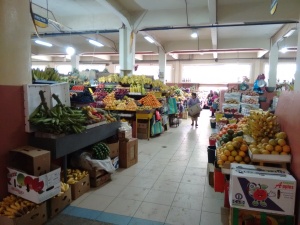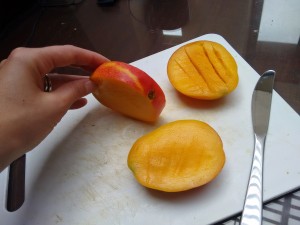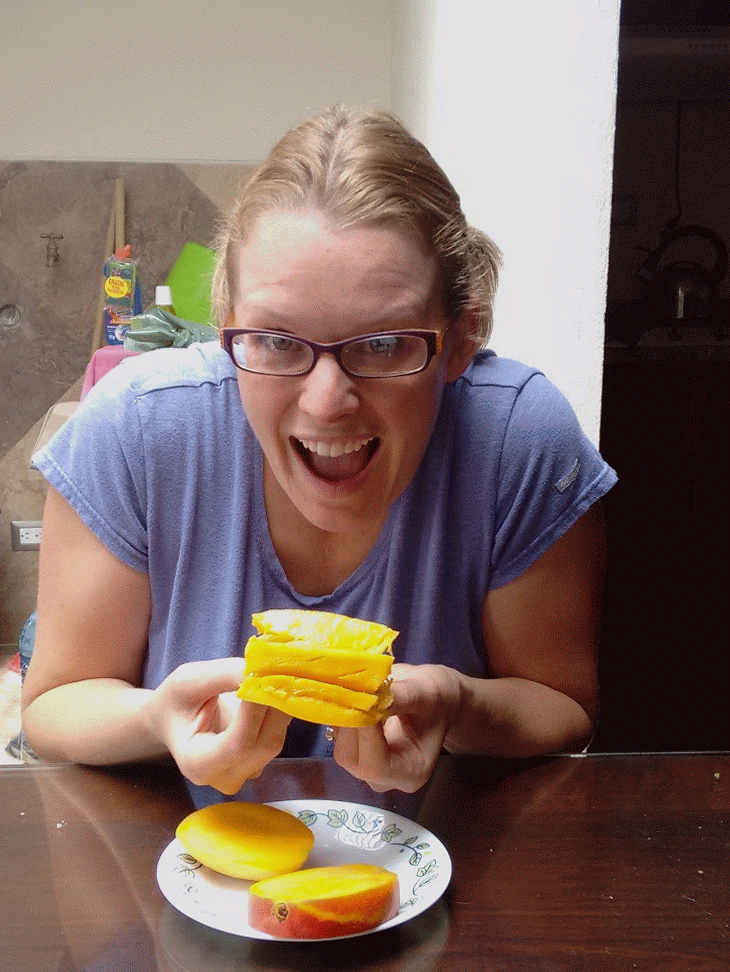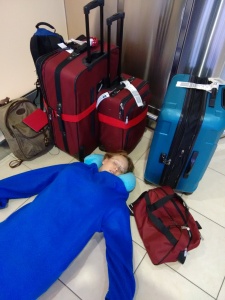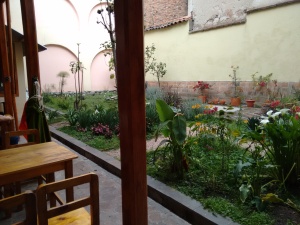Cuenca is an interesting place to explore, rich in culture and history. Ryan and I chose to live in the center of the city so that we could walk everywhere we need to go. We walk to the markets, to the parks and right into hidden restaurants. In this process, we have learned a few things. One. Americans are exceptionally polite. At the market, we learned to not wait in line because there is no line. Hanging back patiently only means that you are indecisive. Walk right up to the vendor at her stand and get to business. She is ready to help you and will do so when she can. Two. Seat yourself in restaurants. Wait staff is very good at keeping tabs on you. They do notice that you have come in and have not yet been given a menu, even if you are sitting at a quite table on the roof.
This brings us to lesson three which deals with walking. People in Cuenca walk in groups and everyone holds hands. Young couples, families, and school friends all stroll with hands happily clasped. They stand visiting in groups at intersections and take up entire sidewalks waiting for public transportation. Navigating these situations can be difficult, frustrating, and even scary. Ryan and I generally walk in single file, as the sidewalks are narrow. However, this consideration doesn’t stop an entwined couple from brushing us into the wall, or an entire family from knocking us off the curb into on-coming traffic.
There seems to be no speed limit in the city of Cuenca. The cobblestone streets, however, help limit the speed of moving vehicles for the most part. From what we’ve seen, there are more one-way streets than not. This helps street crossing immensely because you can only be hit from one direction. There are stop lights at most intersections, at least on one side of the road. This, we’ve learned, has to do with right-hand turns. You can, however, cross the street on either side of the road, or anywhere in-between. As long as there is not an elderly woman squatting nearby next to her boxes of bananas or a couple of kids walking home from school, the sidewalk is yours. You have the right-of-way.
This of course means that we never have the right-of-way. Instead, the right-of-way must be negotiated with body language. Americans may be especially polite, but we are also impatient. Ryan and I walk much more quickly than the people of Cuenca. This means that we have to navigate around A LOT of people. Or should I say, groups of people. In doing so, I have found that it’s best to make my intensions clear from the beginning. I look straight ahead at my pocket and I move into it as smoothly as possible, without pausing, even if it requires me to briefly step into the street from time to time. Focusing on my path also allows others to stay out of my way.
It may be a different story for Ryan, who insists on walking behind me, but he manages to keep up as we slip between that couple, around this toddler and that one, to the left of the banana woman and then, for a moment, the sidewalk is ours. I pull him up beside me and link my arm through his. We have achieved smooth navigation and won the right-of-way, however brief it may be. If not for our blond-hair and light skin, one would think we actually belong here.



